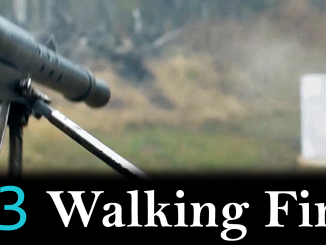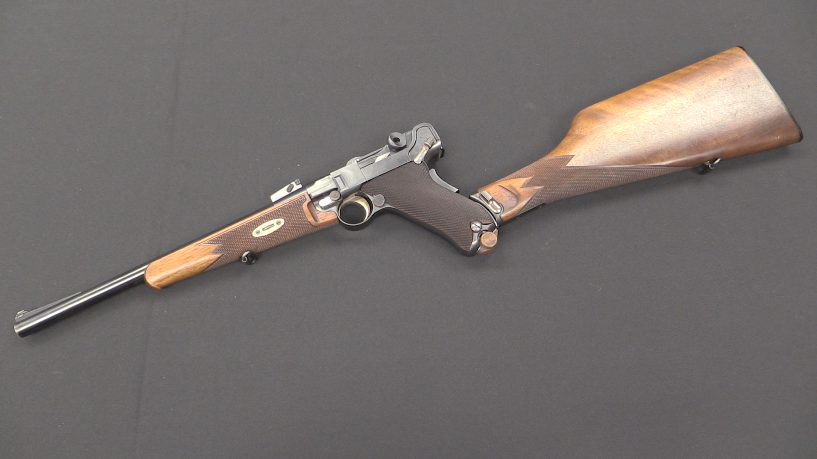The full version with hand loading information (not permitted on YouTube) is available here:
https://forgottenweapons.vhx.tv/videos/black-powder-ep-4-app
Black powder military rifles of the 1860s-1880s are a really enjoyable group of guns. A lot of them are relatively reasonably priced, and they are actually pretty easy to reload for. The unavailability of factory ammunition (for most, although not so much for the Trapdoor) makes them seem like a daunting prospect, but for a pretty simple investment in tools and time one can make up ammunition and have a lot of fun with rifles like this.
That’s the idea behind a new series here on black powder military rifles. Each month, my friend – and handloader – Tom and I will take out a different model to have some fun at the range and compare how they handle. And then we will show you how to make the ammunition for them. So grab your pith helmet, pause “Zulu” and join us! Today is Episode Three: the Mauser Gewehr 1871!




How is the Numrich catalog for barrel bands?
Can’t wait for the Remington rolling block! Mine’s an ex Argentine Modelo 1879 Patria in .43 Spanish 11.15x58mmR. I load a 370-gr. .439 bullet over about 65 to 67 grains of FFg black powder with two fiber wads under the bullet. At some point, I’ll have to try some mild smokeless loads.
It looks like the boys are concentrating on the second generation of black powder metallic cartridge models. Wish they would also try the original black powder metallic cartridge models like the Spencer and Sharps. This would let them show the improvements from the start of metallic cartridges.
“(…)second generation of black powder metallic cartridge(…)”
How is that defined?
I’d think you’d start with capping breechloaders that used combustible paper cartridges… But Bálazs Németh’s “capandball.eu” channel out of his native Hungary has already delivered that, and in spades.
Dreyse needle Gewehr… Chassepot…Podewils-Lindner…Sharps…Civil War carbines of various iterations: Sharps, Smith, Burnside, Maynard, etc.
Then you’d get to the onset of metallic cartridges.
Still, 1871 was mighty early! Just after German unification and the Franco-Prussian War.
My question was not clear enough.
Where is border between second generation of black powder metallic cartridge and previous one?
It all borders on confusion, TBH.
During any period of heated technological innovation, things get very messy and absent of borders. Nobody is thinking of such things at the time; every innovation is seen as a minor step. It’s only in retrospect, decades later, that you can make out such arbitrary things.
Have a look at the revolver development stuff over on C&Rsenal, for an example of this. Very little of what Othais has turned up is actually documented all that well, yet here we are. He’s had to go digging back into the depths of the patent offices in hopes he could find something to show where the boundaries are, and there just aren’t any… It was a seething froth of innovation and ideas, bouncing off of each other, copied, pasted, rethought and re-released.
In other words, pretty much like any other human enterprise. You can try to make sense of it only in retrospect, but when it’s going on? Good ‘effing luck. And, if nobody ever really cares enough about it all to go looking at it? You get the revolver situation that Othais is stumbling through, and which this issue about generational increments of blackpowder cartridges exemplifies.
…as for their last use in combat – were not these rifles used by von Lettow-Vorbeck askaris, who fought till the Armistice?
Yes. In particular the Jägerbuchse 11.15x60mmR version. Of course, by the end of the war, a great many African troops carried captured British and Portuguese service rifles too. In Tanzania in 1914 there were only some 580 Gew.’98s and 1,676 Kar.98 carbines in the colony, mostly used by white colonial troops and settler volunteers. Some 1800 were brought in by a blockade runner later. They had 67 Maxim machine guns, and something like 10,500 M71 Mauser rifles. I’m not sure about the tube-magazine M71/84 rifles, but presumably there some of those in the colonies too.
A handsome old iron. My only objection would be to going to the bayonet after say ten or fourteen rounds rapid. “But Herr Hauptmann, I vas never issued gloves! Zis cannot be according to His Majesty’s Regulations!”
Question: Is/was there any quick field remedy for fouling?
there are the hoary old stories of “making water” down the barrel…
Modern-day, a spit patch can be run through the bore periodically to keep the fouling soft, and some shooters/ rifle users use “blow tubes” to blow saliva-laden exhalation into the barrel from the breech end instead of blowing down from the muzzle end, which is frowned upon given modern safety concerns…